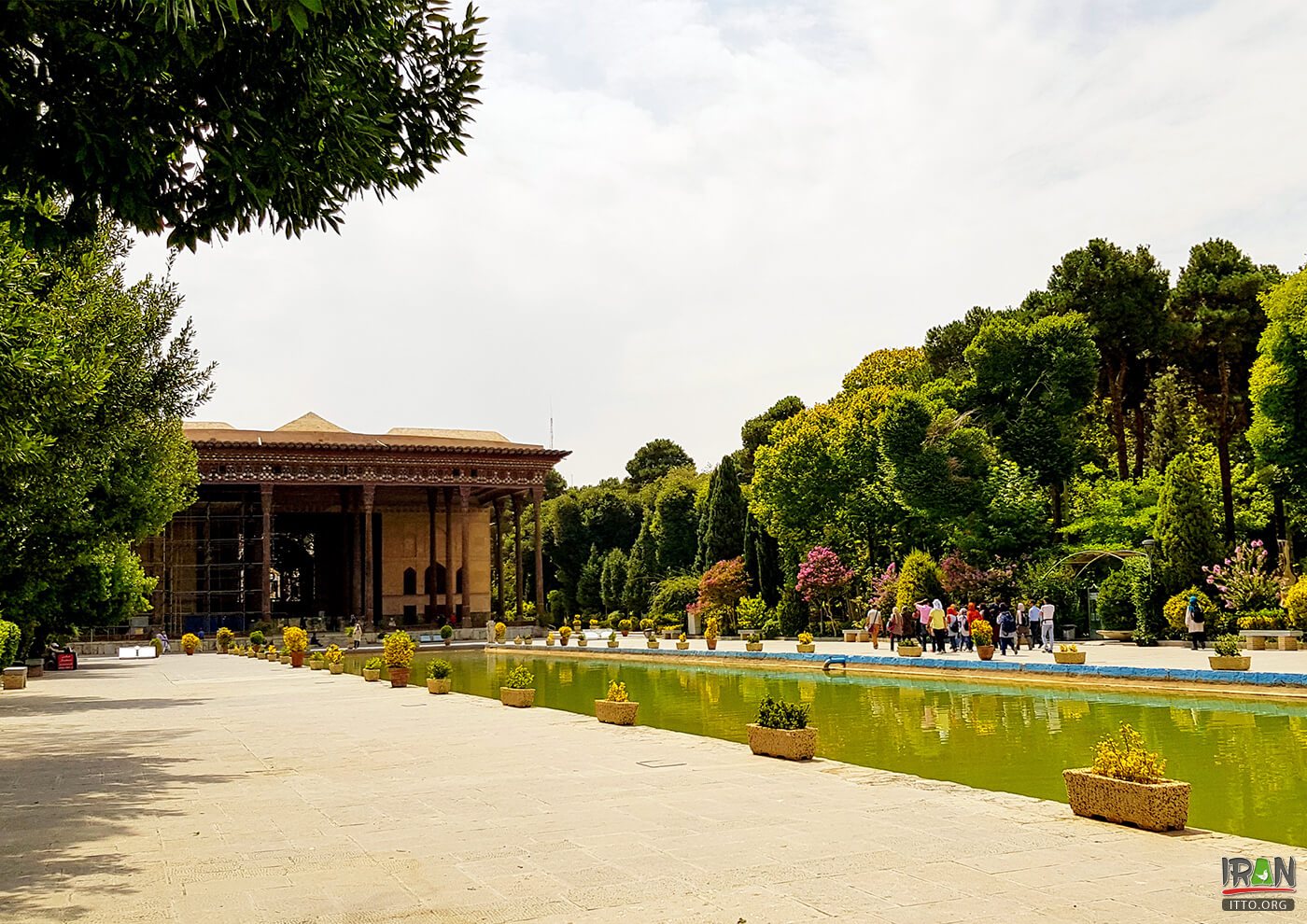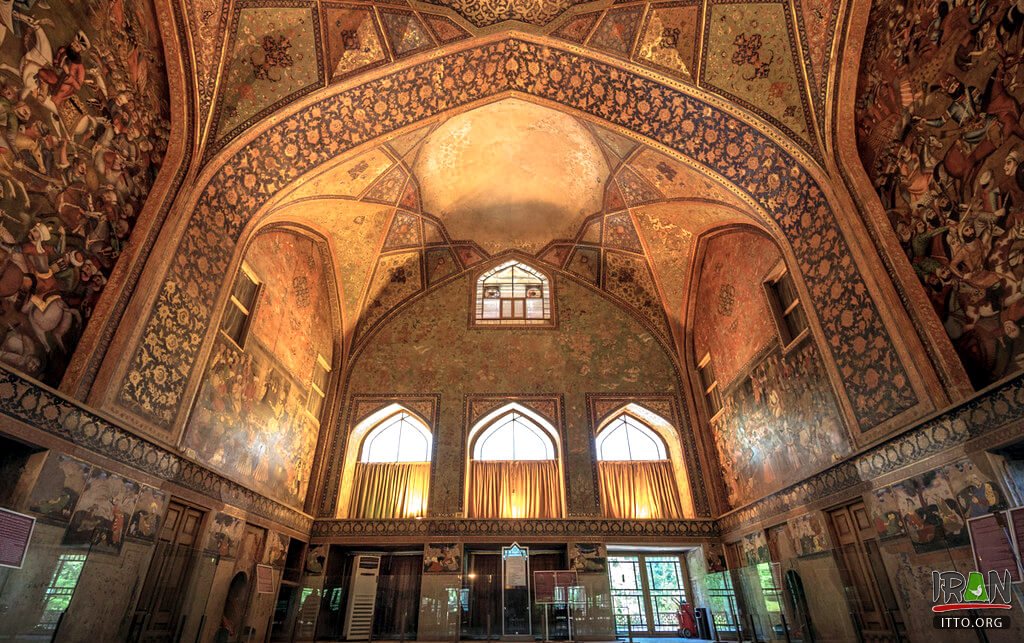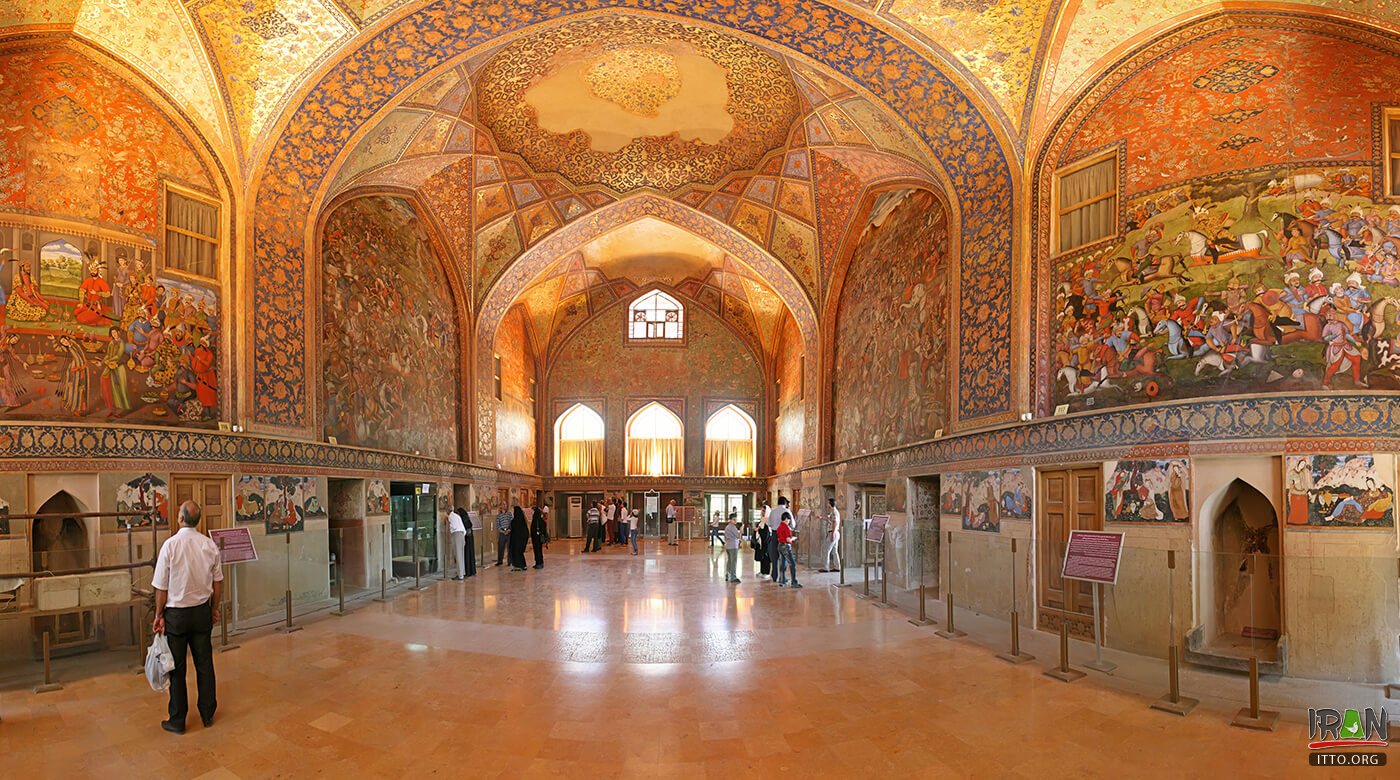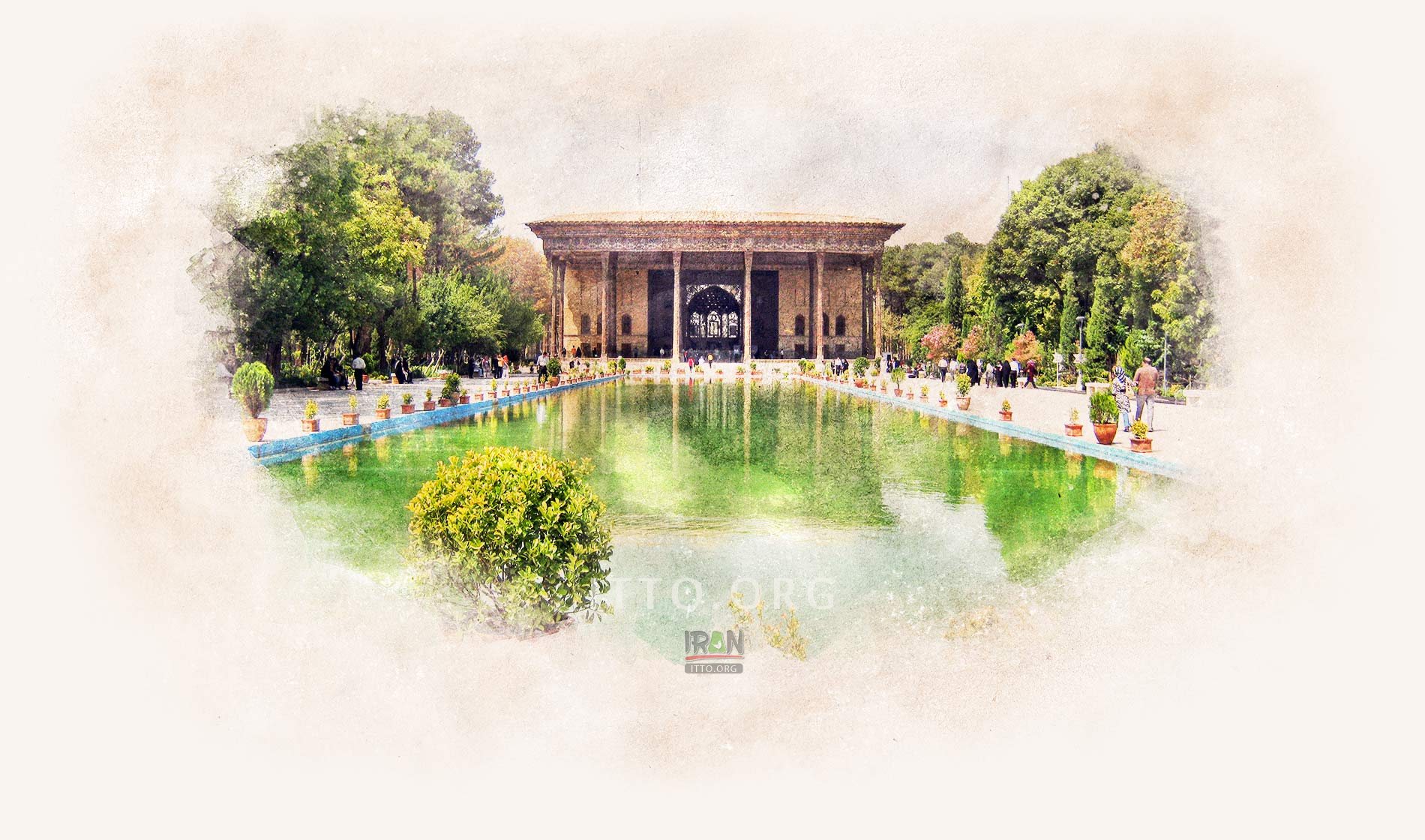The Chehel Sotoun Palace and its garden cover an area of approximately 67,000 sq. m. This palace was constructed during the reign of Shah Abbas I. Shah Abbas II was also responsible for additions to this palace, such as the hall of mirrors, the hall of 18 pillars and two large chambers facing the north and south. The spectacular hall of mirrors with its decorative mirror work, tile work and paintings, along with its majestic porches and pool which faces this hall, all add to its splendor.
Interesting aspects of the Chehel Sotoun Palace are:
The stone lions at the four corners of the central pool, the hall and marble and vaulted cornices around it. Paintings of Chehel Sotoun Palace The gilded adornments, paintings and the portrait of the sovereign in the royal hall. Along with that of the chambers surrounding the hall of mirrors. The portrait of Shah Abbas I with the special crown and the miniatures of the treasury room.
Several facades such as the 'Qotbiyeh Mosque', 'Zaviyeh in Kushk', and the imprints of the 'Dar-e-Joubareh' and 'Aqasi Mosque' are affixed in the western and southern walls of the garden. The hall and porches of this palace were constructed during the fifth year of the reign of Shah Abbas II. The reflection of the twenty pillars of the hall in the pool opposite the palace brings about a conception of forty pillars. Hence the name Chehel Sotoune (Chehelsotoon).

The initial plan of this garden and monument was designed when Shah Abbas, the first king of Safavid Empire, opted Isfahan as the capital city.
The porch of the Chehelsotun palace consists of two parts: a part put on 18 wooden columns and four columns in the center put on 4 stone lines, and the carvings are in such a way that two lions are shown to one human head.the water erupted From the mouth of these four lions and poured into the marble pond. The other part, which is slightly higher, is the entrance door of the hall, and in some references it is called the Hall of Mirrors. This section is located on two columns and is adorned with a vast and prolific work mirror, in which fine and beautiful mirrors are used as mosaics alongside glare and glossy mirrors. The ceiling of the hall is made up of wooden frames and various geometric shapes. A symmetry image of the marble hollow in the middle of the porch is seen in the ceiling decoration. This symmetry is very similar to the great porch of
Alighapou.
The central hall of the palace, dedicated to foreign guests and personalities from other countries, which contains paintings that present the historical events of different periods. This magnificent hall, which is based on a dome, is characterized by colorful lofts and golden and transparent designs of the masterpieces of that era.
Paintings which is in the central hall of the palace, some of which were painted in the ghajar era, include the description of the first and second Shah Abbas, and Shah Tahmasb of the Turks and the Indian Homayoun and also the war of the first Shah Ismaeil with the Uzbeks. Two other images, one of them is opposite of the entrance of the hall and the other against it, depicts the Chaldoran War in the time of the first Shah ismaeil and the Karnal War at the time of Nader Shah Afshar.

Chehel Sotoun (also Chehel Sotoon) is a pavilion in the middle of a park at the far end of a long pool, in Isfahan built by Shah Abbas II to be used for the Shah's entertainment and receptions.
These two images were painted in early Ghajar era.there are rooms On both sides of the hall columns that are currently used for seasonal exhibitions. These rooms also include paintings, some of which are considered a masterpiece of painting.
Most of these paintings were hidden under a layer of plaster in the rule of ZeloSultan, which they came out of plaster and was restored with the help of experts and specialists.
The palace pool, in addition to the beautiful, delights the air . there are statues On the four sides of the pool that are not related to the Chehelsotun mansion and have been moved to this place at the time of destruction of the covered palace.
According to some historians, the mansion was destroyed by a fierce fire, and some of it was burnt during the late Safavie era.

As with Ali Qapu, the palace contains many frescoes and paintings on ceramic. Many of the ceramic panels have been dispersed and are now in the possession of major museums in the west.
On both sides of the Central Hall of the Chehelsoton Mansion, pictures of ambassadors and Europeans who were at that time in
Isfahan have been painted. These paintings were painted by two Dutch painters called Anjel and Lokar.
In general, in Chehelsotun’s historical monument, the combined plan walls and ceiling of the hall, which are located in the beautiful form of Lechak and Bereg, and the main lines of the divisions of the building, which are a combination of paintings, tiles and other various decorations, make this magnificent work in the form of One of the most prominent examples of Safavie era architecture.


